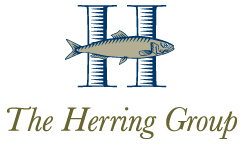Is your five-year goal achievable?
Are your annual revenue growth targets reasonable?
Are your sales and marketing efforts effective?
Is your salesperson productive?
Before you answer these questions, you must answer a more fundamental strategic question about your business. Fortunately, I learned the value of this question in my early discussions with venture capitalists. It was their first question for any company. I learned to prepare an answer.
I also saw the value of this fundamental strategy question as I was advising the CEO of a highly profitable software company. This CEO was unhappy with his salesperson. More importantly, he understood that he did not know what a successful salesperson could produce. He hired me to advise him on financial strategy, including designing a sales compensation plan to increase the company value and incentivize the salesperson to acquire new customers. Before designing the plan, we needed to answer this fundamental strategy question.
Before we get to the question, let’s review how this important question relates to my last blog post about “treadmill businesses.” You do not want to own one or work in one.
In the post, I defined a treadmill business as a business where industry knowledge is high; the business has moved beyond the start-up phase; and profitability (net income divided by revenue) has been consistently low for multiple years.
Landscape Business CEOs:
Do you have a treadmill business?
There are five reasons for treadmill businesses:
- Lack of focus
- An industry in permanent decline
- High costs of acquiring a customer (think sales and marketing costs divided by new customers)
- No clear strategy to beat the competition
- Small (and inadequate) market size
The Strategic Question: What is the size of your target market?
To calculate the market size, you must know the number of potential customers. Then you can multiply total potential customers by the average annual revenue for each of those potential customers.
Before you can determine the number of potential customers, you must answer two other strategic questions:
These strategic questions appear to have obvious answers. In my experience, the answers may be obvious; but writing down the answer to each question in one to two sentences can be quite difficult. However, you will find overcoming the difficulty and documenting the answers to be quite valuable for your sales and operations. Answering these strategic questions will provide a tremendous focus for your employees.
Here’s how I helped one of my clients, who sold an expensive consumer product, size up their market.
What do we sell? Over a period of years, we had focused sales on just one type of product. Initially, it was quite difficult to give up the revenue from the other products, but the focus unleashed tremendous resources and creativity in product development and marketing. Profits also increased.
Who are our target customers? We defined our target market as households with a specified household income, a specific age range, and that had certain “knowable” health issues. Going further, we developed personas for three “typical” customers. This level of specificity enabled us to not only quantify the number of potential customers but also focused our marketing in a powerful way.
We multiplied our revenue from the product by the number of potential customers to determine the size of our market. We divided this number by five because we expected the consumer would replace the product every five years.
One side benefit of knowing the market size is that you can also calculate your market share. Market share is a percentage determined by taking your annual revenue and dividing by the market size. Valuable businesses have a growing market share and above average profitability.
One of my landscape business clients defined his target market this way:
- What do we sell? Maintenance, enhancements and tree services
- Who are our target customers? Class A office and retail buildings in a specific geographic area
This level of specificity in a landscape business helps focus marketing efforts, sales efforts and account managers. Employees, property managers and referral sources know what’s in and what’s out. This level of focus can bring efficiency to marketing, sales, and operations.
The company can size the market by finding the number of properties and multiplying by the average annual revenue per property. If the market size proves inadequate to meet the company’s goals, then the company should broaden its service offering, its target customer, or its geographic focus.
Identifying the target market and size provides several benefits:
- It creates focus. Lack of focus is one of the causes of a treadmill business.
- It helps the landscape business owner determine whether the market size is large enough to be attractive for investment. (Venture capitalists ask about market size for this reason.)
- It equips the CEO and the management team to determine whether long-term revenue goals are achievable. (A business cannot grow larger than the target market!)
- It helps the CEO to evaluate the effectiveness of marketing and sales efforts, including salesperson productivity.
I am interested in how businesses define their target customers.
Tell me how you define yours by dropping me a note in our contact form.

